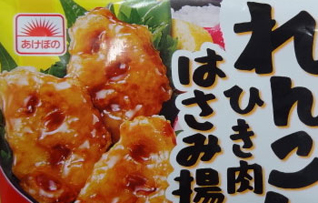 iro Corp. earlier this month released its annual report for the 2013 fiscal year ending 31 March 2014. The Tokyo-based company remained the world’s largest seafood business with sales of JPY 851 billion (USD 8.4 billion, EUR 6.1 billion), up 5.2 percent from the previous year. But while sales were up, profits were down. Consolidated net income was JPY 3.2 billion (USD 30.7 million, EUR 23 million), a year-on-year drop of 41.4 percent, and operating income declined by 11.4 percent, following on a decline of 27 percent the year before.
iro Corp. earlier this month released its annual report for the 2013 fiscal year ending 31 March 2014. The Tokyo-based company remained the world’s largest seafood business with sales of JPY 851 billion (USD 8.4 billion, EUR 6.1 billion), up 5.2 percent from the previous year. But while sales were up, profits were down. Consolidated net income was JPY 3.2 billion (USD 30.7 million, EUR 23 million), a year-on-year drop of 41.4 percent, and operating income declined by 11.4 percent, following on a decline of 27 percent the year before.The declines were attributed to a massive frozen-foods recall, poor results from pollock operations, a weak yen, and early mortality syndrome (EMS) at its South East Asian shrimp farms.
Subsidiary Aqli Foods had to recall of 6.3 million packages of frozen pizzas, chicken nuggets, gratin and corn croquettes tainted with the pesticide malathion. A contracted worker has been indicted for the crime.
To take responsibility, the president of Maruha Nichiro Holdings resigned at the end of the fiscal year and the company was restructured under the new president. Maruha Nichiro Corp. merged with its parent, Maruha Nichiro Holdings, Inc., and with Maruha Nichiro Foods, Inc., Maruha Nichiro Meat and Products, Inc., Maruha Nichiro Management, Inc. and Aqli Foods Corp. The new company was listed on the First Section of the Tokyo Stock Exchange on 1 April under the name Maruha Nichiro Corp.
For pollock, production was cut on short supply and the price of roe and surimi fell as the weak yen hurt Japanese demand. Demand was also sluggish for frozen pollock fillets in the European market. The company has since switched from a 50/50 ratio of surimi to pinbone-out fillet blocks to a 60/40 ratio on an expectation of increased Korean surimi sales under a U.S.-Korea free-trade agreement.
About a third of its profits came from trading business, ironically helped by higher prices for shrimp due to shortages caused by EMS. Company officials are not optimistic about a resolution of the disease problem, but rather are planning to diversify operations in South East Asia to other species beyond skipjack and farmed shrimp.
Also helping the bottom line was a recovery in prices for Chile coho salmon. Offshore seine fishing performed well, and the company received better prices this year for its farmed yellowtail and bluefin tuna.
Another Japanese heavyweight, Nippon Suisan Kaisha (Nissui) reported sales of JPY 604 billion (USD 5.93 billion, EUR 4.4 million), up 6.6 percent from the previous year. Net income swung from a loss of JPY 4.7 billion (USD 46 million, EUR 33.8 million) to JPY 3.7 billion (USD 36 million, EUR 27 million) in the black, while operating income was up 139.8 percent following a 39.2 percent fall the previous fiscal year.
Income from the fishery business in Japan increased, as catches and sales of bonito and yellowtail were firm. European sales and income rose on higher prices and a widened sales area. The company sold off subsidiary Sealord’s unprofitable Argentinean fishing business, as well as two frozen food manufacturing companies, in Germany and China, leading to lower revenue but higher income.
The low yen made the company’s foreign earnings look better in yen terms, but increased the cost of imported materials, especially in frozen prepared foods for domestic sale.
In Japanese aquaculture, prices recovered and sales volumes increased for yellowtail, while volume increased but prices fell for bluefin. In South America, higher feed costs and disease losses for farmed salmon and trout were offset by a rise in fish prices.
Nissui was also hurt by lower North American pollock roe production and prices. Surimi and fillet production increased, but prices fell.
Kyokuyo Co., also headquartered in Tokyo, reported revenue of JPY 202.4 billion (USD 2 billion, EUR 1.5 billion), up 14.3 percent, and net income of JPY 1.8 billion (USD 7.9 million, EUR 13 million), a 64.9 percent increase.
Value-added sashimi products including sliced mackerel, salmon and shrimp were the main profit drivers, but the company expects to see a fall in profits from such luxury items after the sales tax hike that took effect this April, as consumers may resist higher prices.
Revenue in the frozen food segment rose 10.9 percent, as the company launched a new retail brand called “Sea Marche” in June 2013, but the weak yen increased costs while consumers resisted price increases, resulting in a 60 percent drop in the segment’s operating income.





